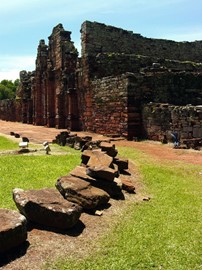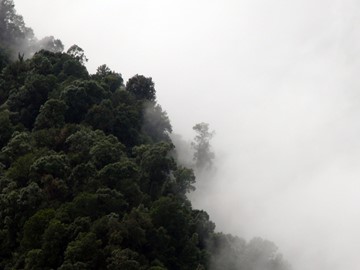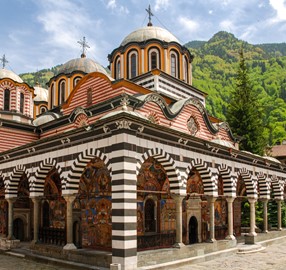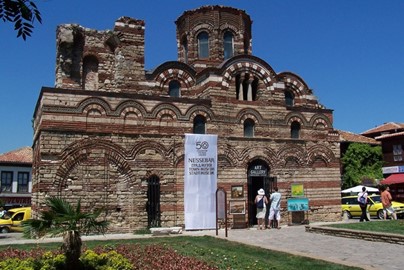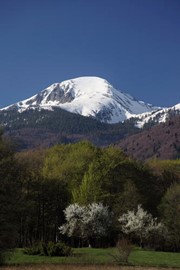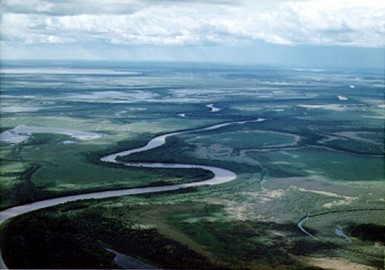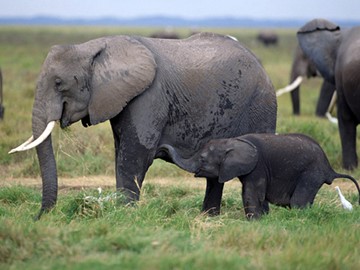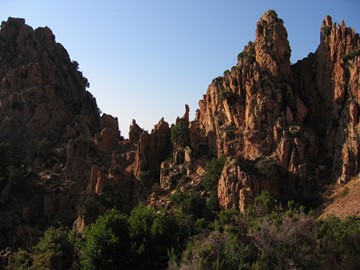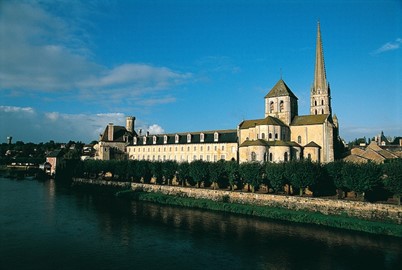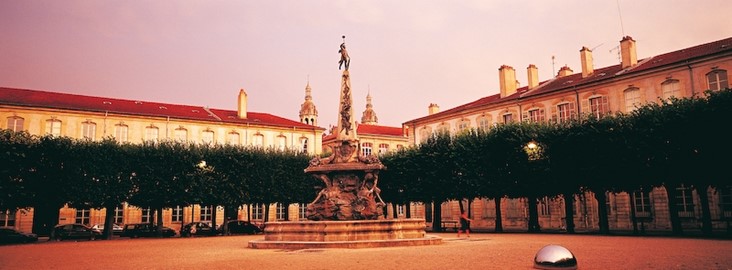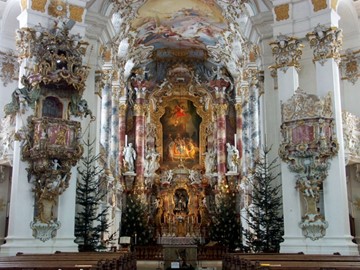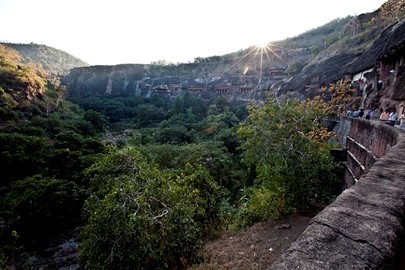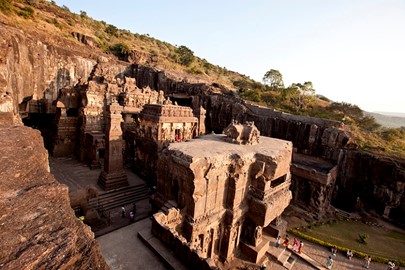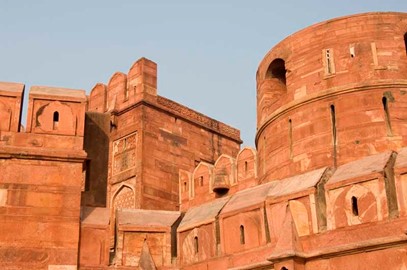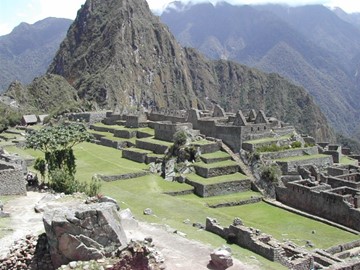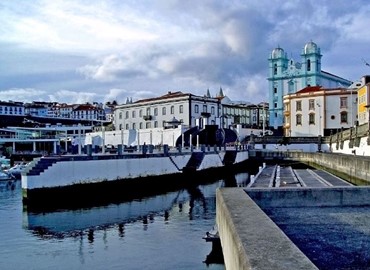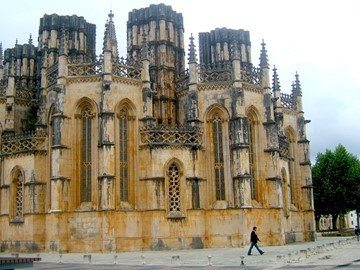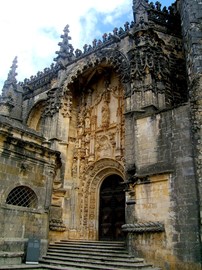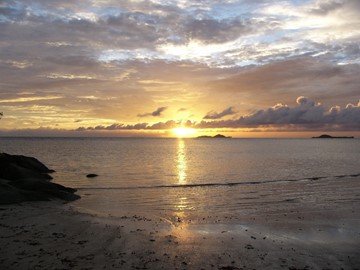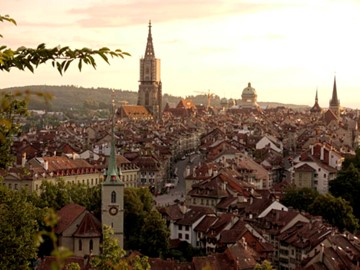year :: 1983
Jesuit Missions of the Guaranis
The Jesuit Missions of the Guaranis, a UNESCO World Heritage site in South America, recognized in 1983 and 1984, are five 17th- and 18th-century mission ruins across Argentina, Brazil, and Paraguay, built to convert and protect Guarani Indigenous peoples. Featuring baroque churches, workshops, and communal layouts amid lush landscapes, they reflect a unique fusion of European and Indigenous cultures under Jesuit stewardship. This transnational site showcases South America’s colonial history, highlighting a ... Read More
Talamanca and La Amistad Reserves
Talamanca Range and La Amistad, a UNESCO World Heritage site in Costa Rica and Panama, recognized in 1983 with an extension in 1990, is a vast tropical wilderness spanning the Talamanca Mountains, protected as a transboundary park since 1982. Featuring cloud forests, peaks like Cerro Chirripó, and rich biodiversity with jaguars and quetzals, it reflects Central America’s ecological diversity. This cross-border site showcases a shared natural heritage, preserving one of the region’s last intact highland ecos... Read More
Rila Monastery
Rila Monastery, a UNESCO World Heritage site in Bulgaria, is a stunning 10th-century Orthodox complex renowned for its architectural beauty and cultural significance. Nestled in a mountainous landscape, it features vibrant frescoes, intricate woodwork, and a striking blend of medieval and 19th-century styles, reflecting centuries of spiritual and artistic evolution. As a symbol of Bulgarian identity and resilience, it remains a vital center of Orthodox Christianity and heritage.
Nessebar
Nessebar, a UNESCO World Heritage site in Bulgaria, is an ancient coastal town celebrated for its rich history spanning over 3,000 years. Known as the 'Pearl of the Black Sea,' it boasts a remarkable blend of Thracian, Greek, Roman, Byzantine, and medieval Bulgarian architecture, including well-preserved churches adorned with frescoes. Recognized for its cultural and historical significance, it stands as a living testament to the region’s diverse civilizations.
Srebarna
Srebarna Nature Reserve, a UNESCO World Heritage site in Bulgaria, is a vital wetland ecosystem centered around a serene lake. Renowned for its rich biodiversity, it serves as a critical habitat for rare and endangered bird species, including the Dalmatian pelican, and supports a thriving array of aquatic life. Recognized for its ecological importance, it stands as a pristine example of natural heritage and a key stopover on migratory routes.
Pirin
Pirin National Park, a UNESCO World Heritage site in Bulgaria, is a pristine alpine landscape celebrated for its rugged peaks, glacial lakes, and diverse ecosystems. Home to rare flora and fauna, including the endemic Balkan chamois, it showcases dramatic natural beauty shaped by ancient geological processes. Recognized for its ecological and scenic value, it stands as a testament to the region’s untouched wilderness.
Wood Buffalo
Wood Buffalo National Park, a UNESCO World Heritage site in Canada, is a vast wilderness preserving North America’s largest population of free-roaming wood bison. Spanning diverse ecosystems like boreal forests, wetlands, and salt plains, it also hosts the endangered whooping crane’s only natural nesting ground. Recognized for its ecological importance, it stands as a critical sanctuary for biodiversity and natural heritage.
Comoé
Comoé National Park, a UNESCO World Heritage site in Côte d'Ivoire, is renowned for its exceptional biodiversity and unique ecosystems. Located in the northeast of the country, it features a diverse range of habitats, including savannas, gallery forests, and wetlands, owing to the presence of the Comoé River. This park is home to a variety of wildlife, such as elephants, chimpanzees, and numerous bird species, making it a critical conservation area in West Africa. Inscribed in 1983, it highlights the region... Read More
Sangay
Sangay National Park, a UNESCO World Heritage site in Ecuador, is renowned for its stunning natural beauty and diverse ecosystems, ranging from tropical rainforests to glaciers. The park features three prominent volcanoes—two active, Sangay and Tungurahua, and one extinct, El Altar—showcasing dramatic landscapes and geological significance. Its isolation has preserved a rich biodiversity, including rare species like the mountain tapir and Andean condor, making it a critical conservation area recognized sinc... Read More
Gulf of Porto
The Gulf of Porto, a UNESCO World Heritage site in France, is renowned for its stunning natural beauty, featuring dramatic red granite cliffs, clear turquoise waters, and diverse marine life. This coastal gem includes the Calanques de Piana, Scandola Nature Reserve, and Girolata Bay, showcasing unique geological formations and a rich ecosystem. Recognized in 1983, it stands as a testament to the region's exceptional environmental and cultural significance, attracting visitors with its picturesque landscapes... Read More
Saint Savin sur Gartempe
Saint-Savin sur Gartempe, a UNESCO World Heritage site in France, is a Romanesque abbey renowned for its 11th-century frescoes. Often called the 'Sistine Chapel of France,' its vivid murals depict biblical scenes across the vaulted ceiling. The abbey’s simple stone architecture contrasts with the intricate artistry inside. Built by monks, it reflects medieval religious devotion and skill. This well-preserved site offers a striking glimpse into early European sacred art. Its serene riverside setting enhances... Read More
Nancy
Place Stanislas, Place de la Carrière and Place d'Alliance in Nancy, a UNESCO World Heritage site in France, is a historic city celebrated for its 18th-century architectural ensemble. Its elegant squares, including Place Stanislas, feature ornate fountains, gilded gates, and neoclassical buildings. Designed as a royal showcase, it reflects Enlightenment-era urban planning. The site blends French artistry with regal charm. This well-preserved gem offers a glimpse into a refined period of European history.
Pilgrimage Church of Wies
The Pilgrimage Church of Wies, a UNESCO World Heritage site in Germany, is a stunning example of Bavarian Rococo architecture, designed by Dominikus Zimmermann in the mid-18th century. Built as a place of pilgrimage following reports of miracles, it features an ornate interior with vibrant frescoes and intricate stucco work that blend harmoniously with its simple exterior. The church stands as a testament to religious devotion and artistic mastery, attracting visitors for its cultural and historical signifi... Read More
Ajanta Caves
The Ajanta Caves, a UNESCO World Heritage site in India, are a remarkable collection of ancient rock-cut Buddhist monuments dating from the 2nd century BCE to the 6th century CE. Renowned for their exquisite paintings and sculptures, these caves showcase a fusion of artistic and architectural brilliance, depicting Buddhist religious themes and narratives. Discovered in 1819, the site comprises 30 caves, including monastic halls and sanctuaries, offering a glimpse into India’s rich cultural and spiritual his... Read More
Ellora Caves
The Ellora Caves, a UNESCO World Heritage site in India, are a remarkable complex of rock-cut temples and monasteries dating from the 6th to 10th centuries CE. Carved into a basalt cliff, this site features 34 caves showcasing a blend of Buddhist, Hindu, and Jain artistry, with intricate sculptures, towering pillars, and detailed reliefs. Highlights include the grand Kailasa Temple, an architectural marvel dedicated to Lord Shiva, reflecting the skill and devotion of ancient artisans. Ellora stands as a tes... Read More
Agra Fort
Agra Fort, a UNESCO World Heritage site in India, is a majestic red sandstone fortress showcasing Mughal architectural brilliance. Built primarily by Emperor Akbar in the 16th century, it served as a royal residence and military stronghold, housing ornate palaces, mosques, and audience halls. Its robust walls and strategic design reflect a blend of defensive ingenuity and imperial grandeur, offering a glimpse into India's rich historical legacy.
Taj Mahal
The Taj Mahal, a UNESCO World Heritage site in India, is an iconic 17th-century mausoleum commissioned by Emperor Shah Jahan for his wife Mumtaz Mahal. Crafted from white marble, it showcases exquisite Mughal architecture with its symmetrical design, intricate carvings, and grand dome. The site also includes lush gardens, a mosque, and a guest house, reflecting its historical and cultural significance. It stands as a timeless symbol of love and a masterpiece of global heritage.
Cuzco
Cuzco, a UNESCO World Heritage site in Peru, is a historic city nestled in the Andes Mountains at an elevation of about 3,400 meters (11,150 feet). Once the capital of the Inca Empire, it showcases a remarkable blend of pre-Columbian and colonial architecture, including the iconic Qorikancha temple and the grand Plaza de Armas. Its well-preserved ruins, vibrant culture, and role as a gateway to Machu Picchu make it a global treasure. Today, Cuzco thrives as a center of indigenous heritage and tourism.
Machu Picchu
Machu Picchu, a World Heritage site in Peru, is a remarkably preserved 15th-century Inca city nestled high in the Andes Mountains. Built with precise stonework, it features terraces, plazas, and residential structures that showcase advanced engineering and architectural skill. Discovered in 1911 by Hiram Bingham, it offers insights into Inca civilization and attracts visitors worldwide for its historical significance and stunning scenery.
Angra do Heroismo
Angra do Heroísmo, located on Terceira Island in the Azores, Portugal, is a UNESCO World Heritage site renowned for its well-preserved Renaissance urban layout and historical significance. Established in the 15th century, it served as a vital maritime hub during the Age of Sail, connecting Europe, Africa, and the Americas. The town features notable architecture, including the São João Baptista Fort and the Sé Cathedral, reflecting its strategic and cultural importance. Its enduring charm lies in its colorfu... Read More
Monastery of Batalha
The Monastery of Batalha, a UNESCO World Heritage site in Portugal, is a stunning example of Gothic architecture blended with Manueline style, constructed in the late 14th century to commemorate a historic military victory. Its intricate stonework, including the Founder's Chapel and the Unfinished Chapels, showcases exceptional craftsmanship and historical significance. The monastery also served as a royal pantheon, housing the tombs of Portuguese kings and nobility. Today, it stands as a well-preserved tes... Read More
Convent of Christ in Tomar
The Convent of Christ in Tomar, a UNESCO World Heritage site in Portugal, is a historic monument renowned for its architectural evolution and cultural significance. Originally founded as a Templar stronghold in the 12th century, it later became the headquarters of the Order of Christ, reflecting a blend of Romanesque, Gothic, Manueline, and Renaissance styles. Its iconic Charola, a 16-sided Templar church, and the intricate Manueline window are standout features, showcasing centuries of Portuguese history a... Read More
Belém
The Monastery of the Hieronymites and Tower of Belém in Lisbon, a UNESCO World Heritage site in Portugal, represent exceptional examples of Manueline architecture from the 16th century. The monastery, a former religious complex, showcases intricate stonework and maritime motifs, reflecting Portugal’s Age of Discovery, while the nearby Tower of Belém, a fortified structure, served as a ceremonial gateway and defensive outpost along the Tagus River. Both monuments highlight the country’s historical wealth, ar... Read More
Vallée de Mai
Vallée de Mai, a UNESCO World Heritage site in Seychelles, is a pristine palm forest renowned for its unique biodiversity. This ancient ecosystem is home to the iconic coco de mer, a rare palm species bearing the world’s largest seed, alongside other endemic flora and fauna like the Seychelles black parrot. Often described as a 'living museum,' it offers a glimpse into a prehistoric world, preserved through its isolation and protected status. Visitors can explore its lush trails, immersing themselves in a n... Read More
Berne
The Old City of Berne, a UNESCO World Heritage site in Switzerland, is a well-preserved medieval town founded in the 12th century. Its sandstone buildings, arcaded streets, and historic fountains, including the iconic Zytglogge clock tower, showcase a unique blend of architectural charm and cultural significance. The city's layout, largely unchanged since the Middle Ages, reflects its rich history as a political and economic center. Today, it remains a vibrant testament to Switzerland's heritage, attracting... Read More
